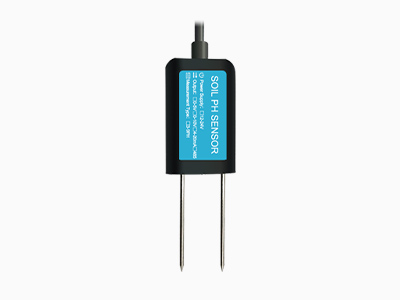Introduction
In today’s world, the demand for food is ever-increasing due to population growth and changing dietary habits. This has put immense pressure on farmers to produce more crops in a sustainable and efficient manner. Maximizing crop yields has become a top priority for farmers, and advanced soil sensors have emerged as a game-changing technology in achieving this goal. These sensors provide real-time data on soil conditions, allowing farmers to make informed decisions that optimize crop growth and yield. In this article, we will explore the potential of advanced soil sensors in revolutionizing agriculture and maximizing crop yields.

The Role of Soil Sensors in Agriculture
Soil sensors are devices that are used to measure various soil parameters such as moisture levels, temperature, pH, and nutrient content. These sensors can be installed in the soil at different depths to provide a comprehensive understanding of the soil profile. By continuously monitoring these parameters, farmers can gain valuable insights into the health and fertility of their soil, enabling them to take proactive measures to improve crop growth and yield.
One of the key benefits of soil sensors is their ability to provide real-time data. Traditional methods of soil testing involve collecting samples and sending them to a laboratory for analysis, which can take days or even weeks to receive results. In contrast, soil sensors provide instant feedback, allowing farmers to make timely decisions about irrigation, fertilization, and other agronomic practices. This real-time data is crucial in ensuring that crops receive the right amount of water and nutrients at the right time, ultimately leading to improved yields.
Another advantage of soil sensors is their ability to monitor soil conditions at a granular level. By installing sensors at different depths and locations within a field, farmers can obtain a detailed understanding of soil variability. This information is invaluable in precision agriculture, where farmers can tailor their management practices to specific areas of their fields, optimizing inputs and maximizing yields. For example, by identifying areas with low moisture levels, farmers can adjust their irrigation schedules to ensure that all parts of the field receive adequate water, leading to more uniform crop growth and higher yields.
Maximizing Crop Yields
The data provided by soil sensors can be used to implement precision agriculture techniques that maximize crop yields. By integrating soil sensor data with other technologies such as GPS and remote sensing, farmers can create detailed maps of their fields that highlight areas with different soil characteristics. This allows for the implementation of variable rate application of inputs such as water, fertilizers, and pesticides, ensuring that resources are used efficiently and effectively.
For example, if a soil sensor detects a low nutrient level in a particular area of a field, farmers can apply fertilizers only to that specific area, rather than uniformly across the entire field. This targeted approach minimizes input wastage and reduces the risk of nutrient runoff, ultimately leading to cost savings and environmental benefits. Similarly, by adjusting irrigation levels based on soil moisture data, farmers can avoid overwatering or underwatering their crops, leading to improved water use efficiency and higher yields.
In addition to optimizing inputs, soil sensors also play a crucial role in monitoring the overall health of the soil. By continuously tracking soil parameters such as pH and nutrient levels, farmers can identify and address any imbalances or deficiencies that may be limiting crop growth. This proactive approach to soil management can prevent yield losses and ensure that crops have access to the necessary nutrients for healthy development.
Challenges and Opportunities
While advanced soil sensors offer immense potential in maximizing crop yields, there are also challenges that need to be addressed. One of the main challenges is the cost of implementing soil sensor technology, which can be a barrier for small-scale farmers with limited resources. However, as the technology continues to advance and become more affordable, it is expected that more farmers will be able to adopt soil sensors and benefit from their advantages.
Another challenge is the interpretation of soil sensor data. While the sensors provide valuable information, farmers need to have the knowledge and expertise to interpret the data and make informed decisions. This highlights the importance of education and training programs that can help farmers understand how to effectively utilize soil sensor technology in their operations.

Despite these challenges, the opportunities presented by advanced soil sensors are significant. By harnessing the power of real-time data and precision agriculture techniques, farmers can increase their crop yields while minimizing environmental impact. This not only benefits farmers in terms of profitability and sustainability but also contributes to global food security by ensuring a consistent and reliable food supply.
Conclusion
Advanced soil sensors have the potential to revolutionize agriculture by maximizing crop yields and optimizing resource use. By providing real-time data on soil conditions, these sensors enable farmers to implement precision agriculture techniques that improve crop growth and yield. While there are challenges to overcome, the opportunities presented by soil sensor technology are vast, and its widespread adoption has the potential to transform the way we produce food. As we continue to unearth the potential of advanced soil sensors, we can look forward to a future of sustainable and efficient agriculture that meets the growing demands of our world.
